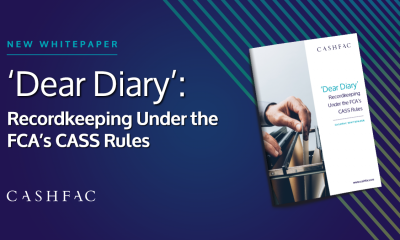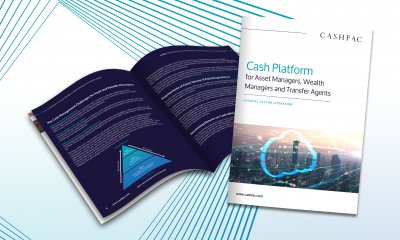Watching the Clock: The Client Money Intra-Day Challenge
James McGivern, Head of NBFI at Cashfac, discusses the challenges for firms managing Client Money intra-day cash in an efficient manner.
They say that timing is everything. In relation to protecting clients’ assets, that used to mean getting everything tucked away by the end of each day. The accepted standard was to complete all cash movements and registrations work before heading home, so that clients would be protected in the unfortunate event of the firm’s demise overnight. In truth, the Big Bang changed the timings back in 1986, when the firms on the London Stock Exchange suddenly included multi-national corporations. But it took another 20 years for the full impact of that change to be felt, when the collapse of Lehman and MF Global brought home the fact that firms can fail at any time of the day, leaving clients exposed to significant gaps in intra-day protections.
These days, the rules are explicit about the need to consider and cover these gaps. CASS 7.17.5R reminds firms that, as trustees under statutory trust, the law:
“does not permit a firm in its capacity as a trustee, to use client money to advance credit to the firm’s clients, itself, or any other person.”
That sounds very reasonable – and the example given, covering purchases of stock on an uncleared cheque, ought to be manageable. However, the reality is significantly more challenging. The requirement is to protect the clients’ money and assets at all times. It is therefore essential for the firm to consider and document the normal timing of all its day to day transactions and to identify and cover all gaps that can arise. This means considering all the transaction types that can take place each day and mapping them, to understand and evidence what takes place hour by hour – in some cases minute by minute. The standard required is, according to CASS 7.12.3G to ensure that the firm’s organisational arrangements are adequate to minimise the risk of gaps in client protection.
Obstacles To Consider
However, ensuring that all of the gaps have been covered is not straightforward. Consider the following questions:
When the firm instructs the bank, when does the bank actually move the money? – Banks must manage their own liquidity and have different service levels and timings for different types of payment.
How can the firm prove when the money actually moved? – The bank statement is presented in a specified order that is not based on the intra-day time of the transaction. Screenshots may be required from the banking terminal to prove the sequence of timed payments.
How quickly can the firm move money between accounts to cover gaps intra-day? – In addition to the above timing considerations, non-client money accounts may be in a different branch or bank. Clients may have money in an account relating to one portfolio that is needed for a purchase in another.
How does the intra-day protection requirement work with diversified accounts? – While the rules encourage diversification of clients’ money across more than one bank, this can impact the agility with which the firm can move money to ensure continuous protection.
How will the firm identify and cover unexpected material gaps intra-day? – The non-arrival of a large receipt can create a significant gap in the clients’ protection, which can be difficult to fill. The sooner that the firm can identify this issue the sooner it can take mitigating actions, whether by chasing the counterparty, stopping the purchase (if possible) or obtaining funding to inject into the account while the issue is resolved.
When will the firm remove funding that is no longer required? – It is equally important to identify when funding is no longer required and remove it promptly from the client money accounts. The presence of substantial excess funds in a client bank account would lead any creditors of a failed firm to argue that the account was commingled, and therefore available to pay the firm’s debts.
All of these considerations point to the need for systems and processes that are rapidly able to identify and react to intra-day funding movement requirements. These movements need to be real-time and evidenced, in order to demonstrate the appropriate protections at all times.
How Does Your Firm Achieve This?
Cashfac’s multi-bank, multi-currency solution operates in real-time allowing us to deliver full intraday solutions for the management of Client Money under CASS 7 including the identification of intraday funding requirements. Cashfac’s platform can easily integrate with any bank, KYC, dealing or settlement systems to create a complete set of self-reconciling, CASS-compliant accounting records.
Get In Touch
For more information on Cashfac’s CASS-compliant cash and banking platform, fill in your details below and we will be in touch.


